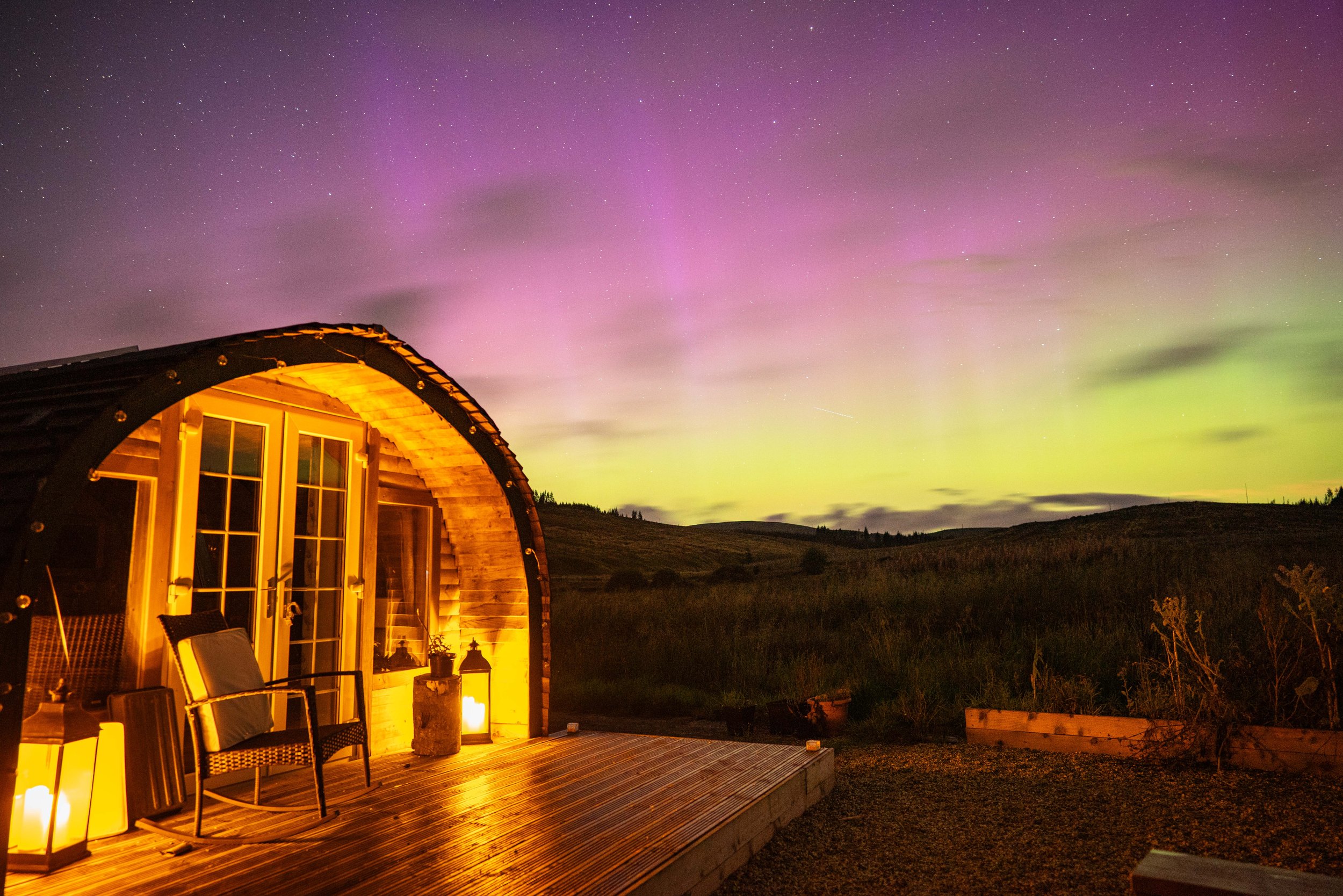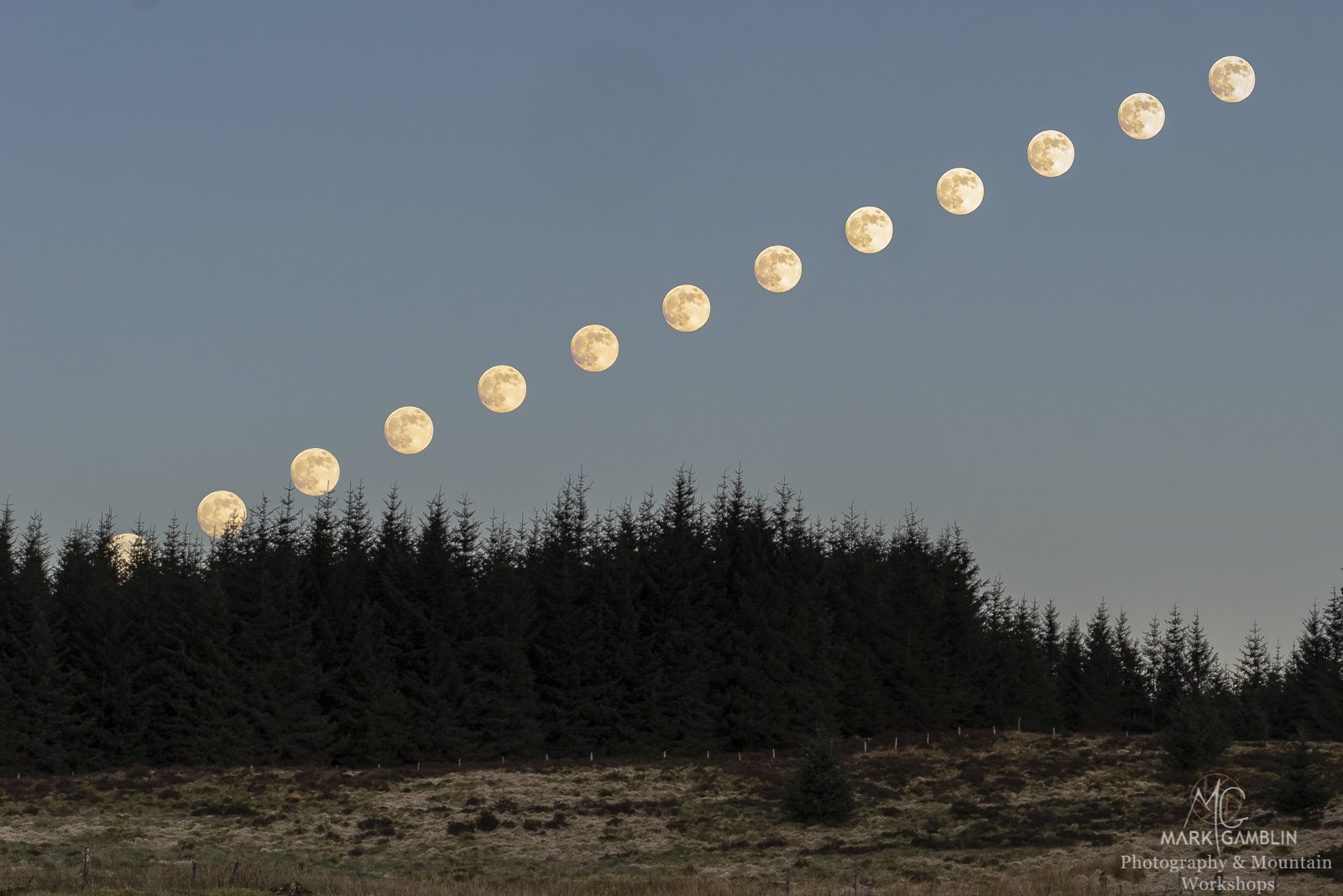Astronomical Events 2025
As we’re nearing the time to close for the colder winter month’s, we’ve been busy working on some special stargazing events, and compiling a list of celestial wonders of 2025.
We have teamed up with Matthew, a Galloway Forest Park, Dark Sky Ranger. We will be offering stargazing holidays with your own dark sky ranger on site to teach you all about the night sky, and even have the use of specialised astronomy binoculars to view the wonders of the night sky. More to come on this with some dates and prices to published soon.
To help you plan your next dark sky glamping holiday in Scotland, we’ve put together a list of some of the best astronomical events of 2025. All these events are visible from the UK, and under the dark skies in our valley we have some of the best viewing conditions in Great Britain. So why not plan your glamping holiday around one of these events.














March
29th - New Moon and Partial Solar Eclipse
A new moon is when the moon is on the same side of the Earth as the Sun, therefore not visible in the sky. This is the best time of the month to observe fainter stars and galaxies.
There will also be a partial solar eclipse visible from the UK on the 29th. The partial eclipse begins at 10am, with maximum coverage at around 11am. Around 30 - 40% of the sun will be obscured at maximum.
April
13th - Full Moon
April’s full moon was known by early Native American tribes as the Pink Moon because it marked the appearance of the first Spring flowers, the moss pink, or wild ground phlox.
16th to the 25th - Lyrids Meteor Shower
The Lyrids meteor shower usually produces around 20 meteors per hour during its peak. It runs from the 16th to the 25th, but peaks on the night of the 22nd and morning of the 23rd.
27th - New Moon
The best time of the month to view the stars and galaxies, without the moon in the sky to wash them out.
May
6th and 7th - Eta Aquarids Meteor Shower
The Eta Aquarids can produce around 60 meteors per hour at its peak. It runs from April 19th to May 28th, but the peak of the meteor shower is the night of May 6th, and morning of the 7th.
12th - Full Moon
May’s full moon known as the Flower Moon, because this was the time of year when an abundance of Spring flowers appeared.
27th - New Moon
The best time of the month to view the stars and galaxies, without the moon in the sky to wash them out.
31st - Venus at Greatest Western Elongation
This is the best time to view the planet Venus, look for the bright planet in the Eastern sky before sunrise.
June
11th - Full Moon
June’s full moon is known as the Strawberry Moon, as this signaled the time of year to gather ripening fruit, and coincided with the strawberry harvesting season.
21 - June Solstice
The June Solstice indicates the beginning of summer in the Northern Hemisphere. The North Pole will have tilted towards the Sun, which will have reached it’s most northernmost position in the sky.
25th - New Moon
The best time of the month to view the stars and galaxies, without the moon in the sky to wash them out.
July
10th - Full Moon
July’s full moon is known as the Buck Moon, due to the fact this was the time of year the male Buck Deer would begin to grow their new antlers.
24th - New Moon
The best time of the month to view the stars and galaxies, without the moon in the sky to wash them out.
28th and 29th - Delta Aquarids Meteor Shower
The Delta Aquarids meteor shower can produce up to 20 meteors per hour at its peak. It runs from July 12th to August 23rd, but peaks on the night of the 28th and morning of the 29th July.
August
9th - Full Moon
August’s full moon is known as the Sturgeon Moon, as this was the time of year when big sturgeon fish were caught more easily in the Great Lakes.
12th and 13th - Perseids Meteor Shower
The Perseids meteor shower is usually one of the best of the year, producing up to 60 meteors per hour at its peak. It runs from July 17th to August 24th, but the peak will be on the night of the 12th and morning of 13th of August.
23rd - New Moon
The best time of the month to view the stars and galaxies, without the moon in the sky to wash them out.
September
7th - Total Lunar Eclipse
A Total Lunar Eclipse is when the moon passes completely through the Earth’s shadow. Causing the moon to gradually get darker and take on a rusty or blood red color.
21st - New Moon
The best time of the month to view the stars and galaxies, without the moon in the sky to wash them out.
21st - Saturn at Opposition
This is the best time of year to view the ringed planet Saturn. It will be at its brightest in the sky and visible in the all night long.
October
7th - Full Moon Supermoon
October’s full supermoon is know as the Hunters Moon, as this is the time of year that the leaves are falling and the game is fat and ready for hunting.
21st - New Moon
The best time of the month to view the stars and galaxies, without the moon in the sky to wash them out.
21st and 22nd - Orionids Meteor Shower
The Orionids Meteor Shower can produce up to 20 meteors per hour at its peak. It runs from the 2nd October to the 7th of November, but the peak is during the night of 21st and morning of 22nd of October.
November
5th - Full Moon Supermoon
Novembers full moon is known as the Beaver Moon, as this was the time of year to set the beaver traps before the swamps and rivers froze.
17th and 18th - Leonids Meteor Shower
The Leonids meteor shower can produce up to 15 meteors per hour during its peak. It runs from the 6th to the 30th, but peaks on the night of the 17th and morning of the 18th of November.
20th - New Moon
The best time of the month to view the stars and galaxies, without the moon in the sky to wash them out.
December
4th - Full Moon Supermoon
December’s full moon is known as the Cold Moon, as this is the time of year when the cold weather and long dark nights settle in.
Night sky time lapse taken by Mark Gamblin. Music, Hope and a Future, Edgar Hopp.
